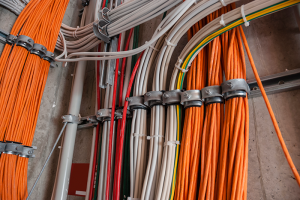Carbon dioxide shortage impacts health care surgeries
The current national shortage of carbon dioxide (CO2) is having its own unique affect on procedural cases in health care. Per experts, CO2 is used as an alternative to nitrogen in procedures because the body absorbs and processes this gas more efficiently than alternatives such as nitrogen, making it a preferred gas to use during minimally invasive surgeries, including laparoscopic, endoscopic or arthroscopic procedures. It enlarges and stabilizes the body cavities for better access to and visibility of the surgical site.
Health care, however, is not the dominant market for CO2. Per a market study conducted by Grand View Research, and based on 2020 data, the food and beverage industry takes the largest portion of the market share for CO2. Medical uses are also behind the oil and gas industry, which uses CO2 for enhanced oil recovery (EOR) processes. The quality grades also vary industry to industry. Industrial grade can be 99%pure or lower, while medical grade is 99.5%pure. The highest grade is reserved for food and beverage at99.9% percent pure or better.
In addition to normal annual dips in production, unique supply chain issues, as well as market competition from the food and beverage industry, are contributing to this shortage.
CO2 is a byproduct of ammonia, so with the summer ending and fertilizer production decreasing at this time of year, the availability of CO2 slows with it. It is also a byproduct of ethanol production, which experiences a similar seasonal drop in demand. Another factor is a natural source of CO2 in Mississippi, at the Jackson Dome collection site. This site is a dormant volcano about a half-mile below the surface of the earth. The site has experienced a contamination incident resulting in its shutdown. The Jackson Dome site supplies a high enough percentage of the national CO2 supply that its shutdown contributes to a rippling effect on the overall market. Officials say it is unclear as to when it will return to operation.
Finding solutions
Despite the supply chain challenges, health care facilities can find solutions by working closely with gas suppliers. Most suppliers are national, such as Airgas, Praxair or Air Products, that are scrambling to work with their customers — both health care and the beverage industry — to cover the gap. Conversion technology exists to convert carbon dioxide (CO2) to medical grade, from any other use grade. Coordinating with a medical gas supplier can connect facility maintenance personnel or respiratory departments with the proper technologies to meet the demand. This conversion technology is helping reduce the supply chain impact on hospitals and ambulatory care centers.
With available conversion technologies and proactive coordination with CO2 suppliers, health care organizations can weather the current shortage while maintaining surgical operations.
Market competition exacerbates CO2 shortage
What other industries is health care in competition with over carbon dioxide (CO2)? The largest industry in the CO2 market is the food and beverage industry It’s the key ingredient used to givesoda and seltzer waters their fizziness, and, with the fast growth of microbreweries alongside the traditional large brewers, these manufacturers need it to keep their beers tasting fresh as well as fizzy. Bulk gas vendors see as much, if not more, work from these industries as they do health care. Per an NPR report from Sept. 22 “Carbon dioxide has no taste, no odor, and no color — but it's a vital ingredient in the beer business, from putting frothy bubbles in brews to blocking oxidization that makes beer taste stale.”
Carbon dioxide is also a natural byproduct of the brewing process. Technology does exist to capture and use the CO2 created in that process, but those efforts are more focused on carbon footprint rather than making up for supply chain issues. This technology also only enhances supply and is not intended as a sole source. Carbon dioxide is also used in the meatpacking industry, as well as in the production of dry ice.
With many competing industries, health care facilities must find proactive and creative solutions to continue meeting patient demand.




